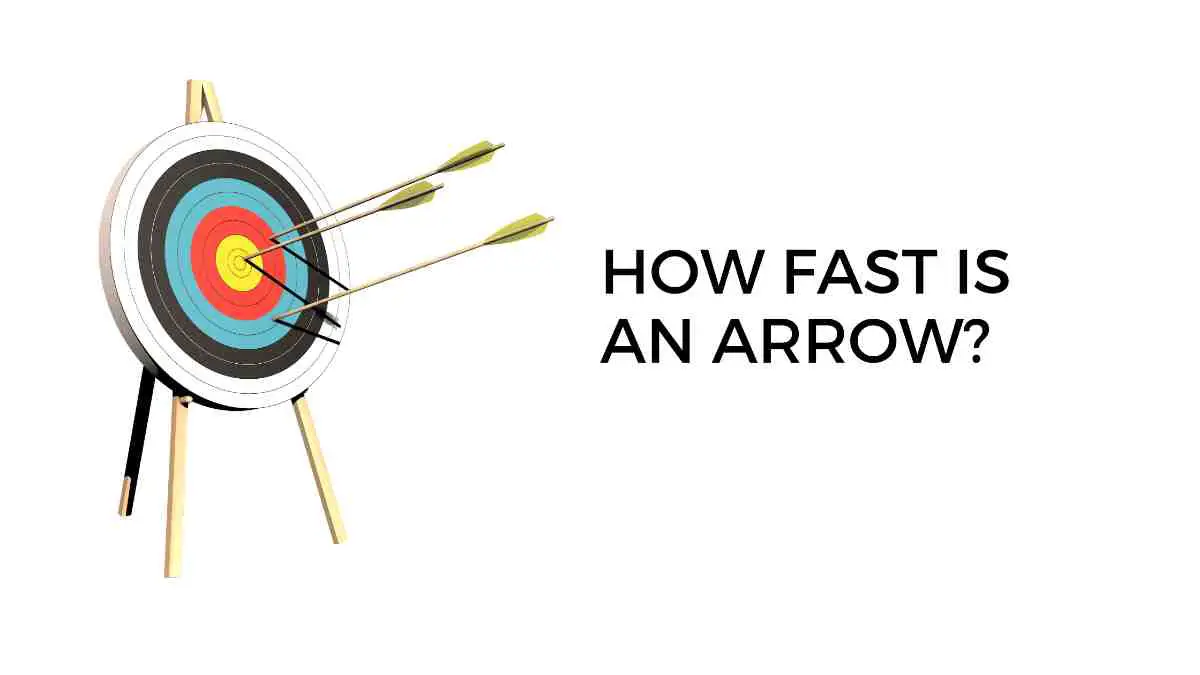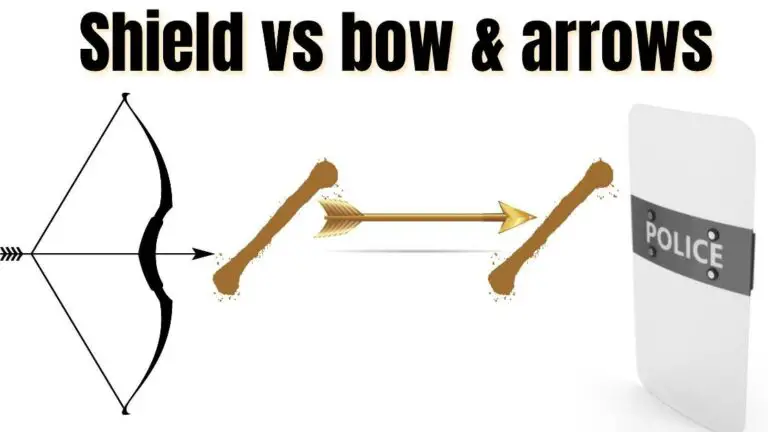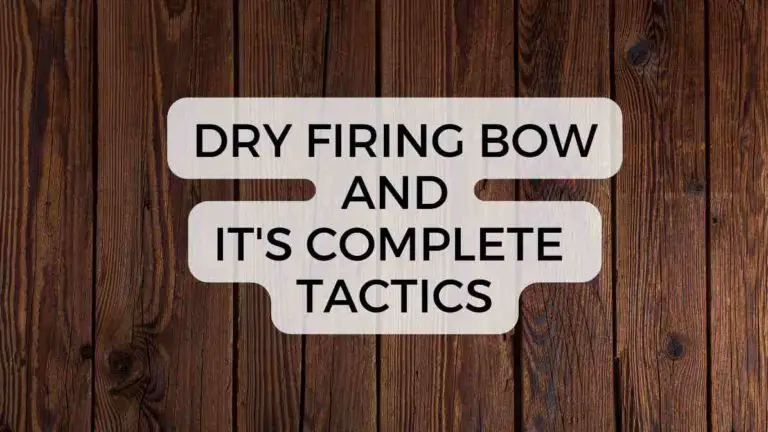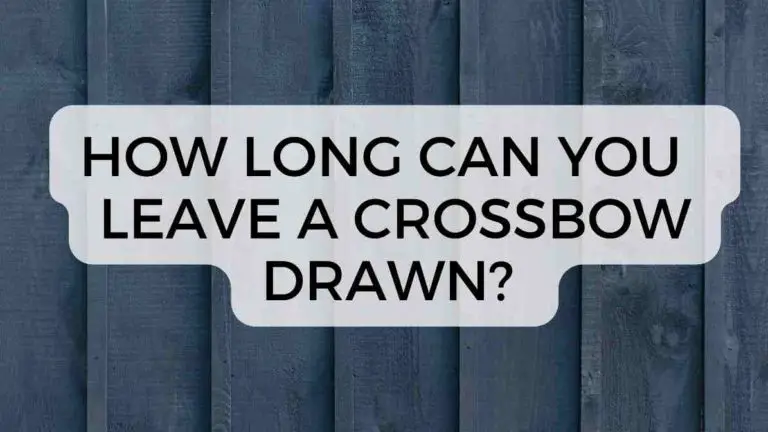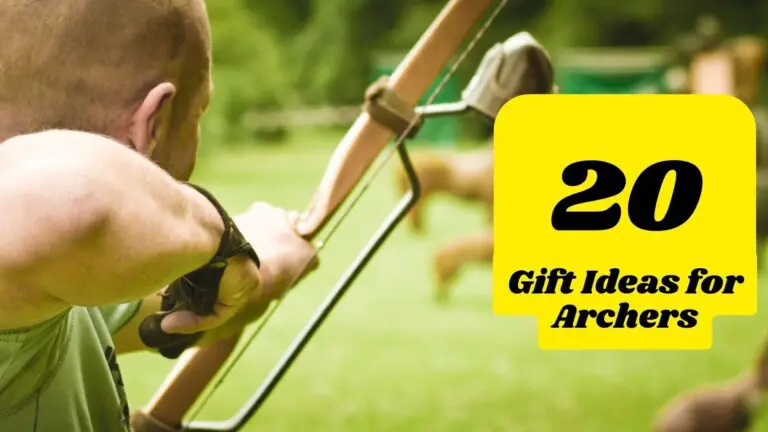How Fast Is an Arrow? (Beginner’s Guide)
In the world of archery, speed is everything. And there’s a good reason for that – an arrow traveling fast enough to hit its target is much more effective than one that doesn’t. We will discuss how fast is an arrow and the factors which affect it.
What is the Speed of an Arrow?
Arrows shot from recurve bows can reach speeds of up to 225 feet per second (fps) or 150 miles per hour. Compound bow arrows, on the other hand, can travel up to 300fps (200 miles per hour). Longbow arrows move slower because they are heavier. Despite the speed of 300fps, it still takes about one second for an arrow to reach a target 90 meters away.
Recommended:
Average speeds of recurve and compound bows
A recurve bow will shoot arrows at a rate of 140 to 200 fps on average, and compound bows will shoot arrows at 230 to 280 fps. You should use stronger draw weight and draw length, as well as lower grain arrows, to increase the speed of your arrows.
Nevertheless, understanding how these speeds are calculated, as well as what factors influence them, may help you better comprehend your equipment and the implications of these values.
How fast is an arrow?
Arrow speed are measured in fps, which stands for “feet per second,” by most manufacturers. The arrow will travel this distance every second after being fired, in feet.
You may be excited if you see the numbers advertisers put on their bows. Arrows are said to be fired at 300-330 fps by a typical compound bow. To comprehend these numbers, you’ll need to understand how they’re measured.
Point-blank speeds are reported on bows, indicating that the arrow velocity is determined immediately after it leaves the bow. This basically means that real arrow speeds are much slower when they hit the target since we know that arrows lose speed in the air over time.
How to measure an arrow’s speed?
When measuring how fast an arrow is, the several elements that influence them to remain constant. We’ll look at those later. Bow makers usually utilize the IBO testing criteria to ensure consistent testing circumstances.
A 70-pound draw weight, a 30-inch draw length, and a 350-grain arrow are used in IBO tests. Bow speeds are comparable thanks to these controlled conditions and point-blank measurements.
This means that if the speeds were measured under similar circumstances, you can expect that the first bow will be quicker since it shoots arrows at 330 fps while the second one shoots them at 330 fps.
The actual speed on your arrows will, however, be substantially lower than what is promised since you utilize the bow at a distance from the target and might utilize a lower draw weight or draw length.
IBO speed vs Real speed
When comparing IBO speed vs real speed, there can be some differences. IBO speed represents the arrow’s velocity immediately after leaving the bow under controlled conditions.
However, real speed, which is what the arrow actually travels at when hitting the target, can be slightly slower due to factors like air resistance.
So, keep in mind that the IBO speed might be higher than the actual speed when making your equipment choices.
What factors affect arrow speed?
The draw weight and draw length of the bow, as well as the weight of your arrows, are the key factors that influence arrow speed.
As I previously stated, the speed of the arrow has a big bearing on how close it is to the target. The arrow will travel slower when it hits a target farther away because of air resistance.
Yet, because it depends on the aerodynamics of the arrow and the speed itself, it’s difficult to predict precisely how much it’ll slow down over time.
So you can estimate your bow’s actual arrow speed, I’ll also estimate how each of these factors affects the speed of the arrows.
Draw weight of the bow
When at full draw, a bow with a stronger draw weight can store more energy, which is then transferred to the arrow for a faster shot.
Your actual arrow speed will be greater if you fire a greater draw weight. Adding 10 pounds to your draw weight usually translates to a 10-20 fps increase in arrow speed, according to the general norm.
Not all archers use a 70 lbs bow, of course, given the IBO setup. As a result, your arrow velocity will be 30 to 60 fps slower than claimed if you use a 40 lbs bow.
Draw length of the bow
Another factor that affects arrow speed is draw length. The arrow is affected by the bow for a long distance with a higher draw length. As a consequence, arrows launched out of the bow are fired faster.
Archers use different draw lengths, and higher draw length bows shoot faster arrows. Draw length’s impact on arrow speed is typically estimated to be around 10 fps for every 1″ draw length.
30″ bows are utilized in the conventional IBO configuration. Your actual arrow velocity will be 20 fps slower than the bow’s speed rating if, for example, you’re using a 28″ bow.
Total arrow weight
The velocity of an arrow is largely determined by its weight. Arrows with different grains and heavier arrows will result in slower speeds if you utilize one bow with the same settings.
Because the bow releases the arrow with the same amount of kinetic energy, hence greater speeds for lighter arrows, this is the case.
The equation that describes the relationship between kinetic energy (K), arrow mass (m), and arrow speed (v) is written as follows for physics nerds like me:
$latex v^{2}=2\frac{K}{m}$
As you can see, the speed will drop as the arrow weight increases.
For every 10-grain difference in arrow weight, the typical numbers that explain the influence of arrow weight on arrow speed average 3 fps. You might be able to get more exact figures by using the formula above.
If you choose to utilize 400-grain arrows, your arrows will be around 30fps slower than the speed rating because IBO requirements use 350-grain arrows.
Note: While less important than the factors we’ve discussed so far, there are other elements that may influence the speed of your arrows.
Is arrow speed important?
You should think about arrow speed, but don’t worry about it. Faster arrows have a flatter flight, resulting in a smaller margin of error, whereas heavier arrows can transport energy more efficiently and be more dependable.
You’ll have to discover the perfect balance for yourself. Being aware of your arrow speed is vital since knowing your gear is crucial, but low numbers for the sake of having high numbers aren’t worth it.
The kinetic energy of the arrow, which determines how much it can penetrate a target, is what bowhunters really consider. The penetration power necessary to hit bigger targets is greater, hence you’ll need more energy.
Does arrow speed affect your effective range?
Although quicker arrows have a greater range, slower, heavier arrows may have a longer effective range. Since heavier arrows are less impacted by the wind and conditions, you may fire accurately at greater ranges with them.
The faster arrows will have a greater effective range if we decide to use the same grain arrows at a faster arrow speed (which means using a higher draw weight and draw length). The flatter flight curve will provide less opportunity for human error in the shot because it will slope down.
Both the arrow speed and the effective range of your shot are determined by a number of factors, each of which has an impact on the characteristics of your shot.
Conclusions
Arrow speed is a crucial factor when it comes to your hunting success. You need to know how fast your arrow is traveling in order to successfully hit your target.
In this blog, we’ve discussed all you need to know about arrow speed, including the factors that affect it. We also recommend a suitable bow for your shooting goals, based on your archery ability and target type. Hope you found this blog helpful! Visit our site for more helpful information.
